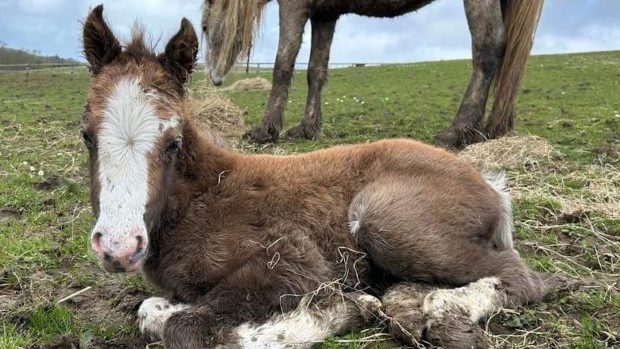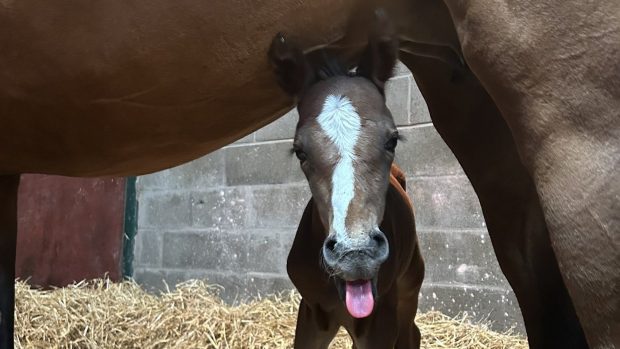More articles on foals
Get the latest breeding news
Horses, like humans, have a natural variation in the shapes of their limbs and the ways in which they place their feet on the ground. Because we require our horses to be athletes, the straightness of their limbs and the placement of their feet are important to avoid joint problems, lameness and premature retirement.
The most critical time in terms of limb conformation is the first three months of the life of the foal. Many foals are born with bent or wonky legs and cause great concern to owners who have waited patiently for the single precious foal from their only broodmare.
Most of these apparent problems will resolve themselves quickly as the foal becomes active and the joints tighten and stabilise. But if the foal still has deformed legs after a week or two, or even worse, the deformity is becoming more exaggerated, what can be done to sort things out?
What’s going wrong?
Deformed legs are broadly divided into angular deformities, in which the straight line of the leg deviates when looked at from the front or the back, and flexural deformities, in which one or more of the joints is abnormally bent or stretched when viewed from the side.
Foals are very commonly born with flexural deformities — fetlocks either too low or too high — or knees slightly flexed. These almost always correct themselves.
They are also often born with an angular deformity at the knee, so they appear splay-legged, with the knees kinked inwards and the cannons pointing outwards more than the forearms. This is called a “carpal valgus deformity”.
If the knock-kneed appearance is simply due to slack, floppy ligaments in the knee [the “carpus”], the legs will straighten as the foal moves and strengthens. Some very slight carpal valgus is considered normal in young foals and will not completely resolve until the chest widens and the forearms are pushed outwards.
Although carpal valgus is common, angular limb deformities also happen at the fetlock, where an inward deviation is seen most often — a fetlock “varus” deformity. The hock may also be affected and although it may be just as common, it seems to lead to fewer problems if it remains uncorrected.
When an angular deformity arises as a result of posture, abnormal bone growth or injury, there is a very limited time frame in which correction can be achieved. The growth plate of the radius, just above the knee, hardly grows after about five or six months of age and the growth plates above the fetlocks stop growing at about three months. If vets are going to correct a bent leg, it is essential they intervene before bone growth at these sites finishes.
Corrective farriery
It is common practice on stud farms to examine foals regularly on a flat, hard surface and walk them up and down to assess limb conformation, footfall and breakover. This enables any tendency towards angular limb deformities to be picked up and corrected early by means of corrective trimming or farriery. We have learned that surprisingly little “tweaking” of the balance of the feet can keep limbs growing straight and true.
If the foot tends to be placed outwards a valgus deformity may be arising and we trim the outside of the hoof to bring it back under the foal. Conversely, if we spot a foot deviating inwards, trimming the medial wall and heel will realign the foot placement and prevent a fetlock varus becoming established.
If trimming alone is not sufficient, there is a good range of stick-on shoes for foals. These offer medial or lateral extensions to provide extra support and have more radical effects on foot placement.
Surgical treatment
When foot balancing has not worked, there are two surgical options for treatment. We can either stop the growth on one side of the bone by bridging the growth plate with an orthopaedic implant, or speed up the growth on the other side by cutting and lifting the fibrous periosteal bone covering. In very severe cases, we can do both.
Whatever we decide to do, it must be done while the bone is still growing at the site where the angular deformity has arisen, which means with fetlocks before three months of age and with knees and hocks before about four or five months. After these times any growth will be minimal and straightening of the legs will be disappointing.
This veterinary feature was first published in full in Horse & Hound (27 April, ’06)
Looking for more articles on foals?
Get the latest breeding news now



